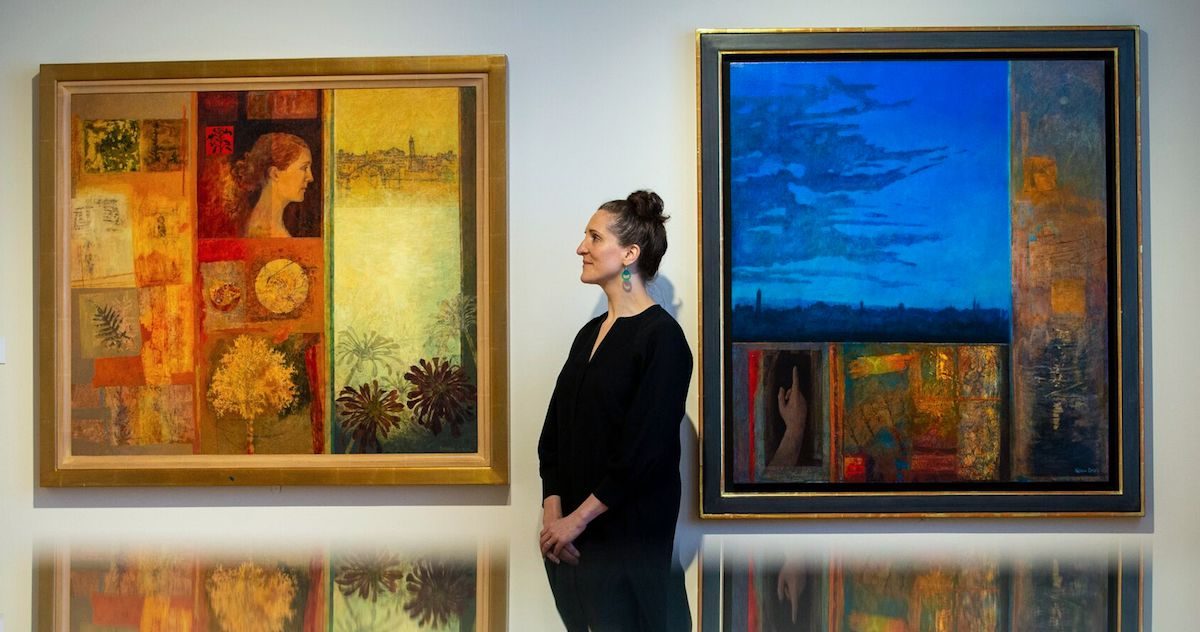Beauty. Not a word used much today. Not a popular concept. Not necessarily an accolade. Yet Victoria Crowe creates beauty with her every brushstroke, line, smudge, highlight, shadow. Superb draughtsmanship combined with a perfect painterly touch and humane sensitivity produces overarchingly intelligent pictures, rarely encountered in 21st-century art galleries.
An ability to see, to capture, to delineate beauty in all things – CH
No surprise that her show covering 50 years installed on four floors at the City Art Centre is mobbed. People can respond to her work on many levels, for she makes lyrical landscapes, penetrating portraits, dramatic Venetian skies, fragmented Italianate motifs, exquisite night-blooming flowers. Nothing is obvious. All images are subtle, ambiguous.

Night and day, sun and shade, hot and cold, reality or fantasy, remembrance or reflection, a melancholy solitude completely lacking in sentimentality infuses much of her work. No wonder her works have inspired poetry from several well-known poets.
Crowe, now 74, studied at Kingston, then the Royal College. She came to Edinburgh in 1968 to teach at the College of Art and stayed. Yet she has always lived outside the city, loving the Pentland Hills, its light, and windswept trees, its sheep and space. An early series of mid-1970s austere snowy scenes and brooding dark interiors inspired by Jenny Armstrong, an elderly neighbouring shepherdess and her home, made Crowe’s name.
I remember seeing these painting: timeless, then and now. Minimal in their whiteout, stern in their fortitude, these are not pretty Christmas pix but a record of a hard and solitary life.
Crowe has had a recent bounty of shows. Last year the Scottish National Portrait Gallery’s show Beyond Likeness, filled their galleries for six months. It was a remarkable parade of big names, with her year culminating in her portrait of Prince Charles. Her family and self-portraits also featured, so that this time they are less, but fill a room where an impressive video gives us Crowe with her honest, thoughtful dissections, explanations and admissions. Lucky students; what a great teacher to have.
Crowe has exhibited with the Scottish Gallery since 1970 and did so again this year – her 12th show. There are many useful catalogues and monographs; she has worked with the Dovecot for several large scale tapestries for London & Scotland; with musicians for collaborative video, projection works at Snape Maltings, the Wigmore Hall, and the Netherlands. Residencies, professorships and fellowships abound. Above all, Crowe has worked. Discipline and work have carried her through.
In 1995 her son died of cancer. On the video, she explains how Venice helped her come to terms with this tragedy, its ancient walls and long history reassuring in some indefinable way. Since then she and her husband have spent more time in Venice, with Italian art and the city an increasing influence. The beauty of reflections in both water and mirrors, windows and doorways, provide her with wonderful compositions where silhouettes of radiant sky and cupola, mysterious cloud or illuminated tower, fill a splendid if ambiguous space. Magic? No, just an ability to see, to capture, to delineate beauty in all things.
Words: Clare Henry Photos: courtesy of the Artist
A book, Victoria CROWE: 50 Years of Painting by Susan Mansfield, is published by Sansom

